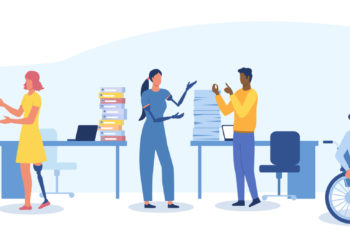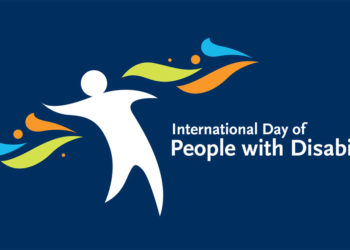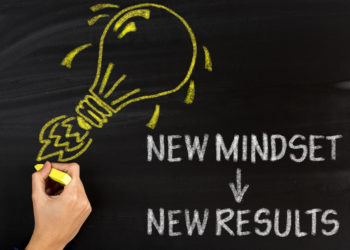Editor’s Note: Today’s post is by Simon Holt, Erin Osborne-Martin, Miguel Ramos, Matthew Salter, and Karen Stoll Farrell. Simon is Head of Central Strategies, Content Acquisition at Elsevier. Erin is Associate Director, Strategic Analytics at Wiley. Miguel is a project manager for SPIE’s Digital Library, leading efforts in accessibility improvements to its platform. Matthew is the Founder and CEO of Akabana Consulting LLC, a boutique publishing consultancy. Karen is Head of Scholarly Communication at Indiana University Libraries, Bloomington.
The authors would like to thank those who contributed ideas to this piece, including: Lisa Braverman, Sylvia Hunter, Dan Shanahan and Jennifer Erica Sweda
December 3 marks the UN’s annual International Day of People with Disabilities. Over 1 billion people worldwide, or 15% of the world’s working-age population, have a disability. Around 80% of disabilities are ‘hidden’, meaning that it’s highly likely that you live and work with many people with disabilities, without being aware of it. More broadly, it means that as organizations and as an industry, if we are serious about diversity and equity, we need to proactively take steps to become more disability inclusive.
There is, of course, a big difference between recognizing that something needs to be done, and knowing how to go about doing it. To this end, a group of volunteers (volunteer with us) is currently partnering with C4DISC to build aToolkit for Disability Equity in the Scholarly Communications Industry, following on from the excellent antiracism and inclusive language toolkits already published. We hope to launch the first version of this toolkit in 2023.
One of the main things we have learned during the development of the toolkit is that many of the activities that make the most impactful difference are small-scale and low-cost, involve behaviors rather than huge infrastructure shifts, and are changes that organizations of any size can implement. We also recognize that inclusion is a journey, and everybody needs to start somewhere. In this article, we present 10 quick wins to help make your organization more disability inclusive.

QUICK WINS:
- Establish a clear point of contact for basic workplace adjustments. Make sure that all employees are aware of this person’s role. This removes one of the major barriers to people accessing the support they need to succeed at work and helps individuals with disabilities feel less isolated, as they know where to go to get the help they need.
- Ask those who report to you what they need to be motivated and successful. Ask this on a regular basis, as abilities and best practices change over time. This helps to create a diverse and inclusive culture and normalizes the idea that not everyone needs exactly the same working environment to fulfill their potential. It also gives individuals who require workplace accommodations a platform to ask for them without having to bring it up themselves, which can feel awkward and intimidating.
- Offer and expect flexibility throughout the work environment. This may include remote work and flexible work hours where possible, but also varying office setups (including support for non-standard home office equipment) and communication preferences. Have a camera-optional policy for video conferencing wherever possible. Having this flexibility in place for everyone allows individuals to feel more comfortable, increasing their sense of belonging and psychological safety.
- Invite a speaker who identifies as having a disability to speak to your organization, or offer staff a disability awareness training course, and hold a discussion session afterward. Then gather interested staff for a discussion about disability and your workplace to prioritize efforts. This helps to normalize conversations about disability and gives people an opportunity to ask questions and raise topics they may otherwise feel afraid to mention due to social stigmas around disability.
- Use built-in accessibility tools on major software, such as Zoom’s captioning tool, and use accessibility checkers for office software, such as Microsoft’s Accessibility Checker. This means you can feel confident that individuals who use assistive technology can access your materials and meetings. Given that approximately 80% of disabilities are ‘hidden’ (i.e. non-visible), you may not know who these individuals are!
- Share information on your website and in your recruiting and onboarding materials about what you are already doing to be inclusive of people with disabilities. This will encourage more people with disabilities to apply to your organization, allowing you to hire more diverse talent. It could also raise awareness about ongoing efforts amongst your existing staff!
- Conduct an internal and anonymous survey as a starting point to understand how many people in your organization have disabilities and what their needs may be. Look at Scope’s guide to reporting for guidance. This will give you a sense of which initiatives you’d like to prioritize in this space depending on what kinds of disabilities are represented.
- Remove unnecessary requirements from job descriptions and postings (such as being able to lift at least 60 pounds for a strictly computer-based role). Including these requirements excludes people who are capable of performing the core duties of the position.
- When recruiting, ask candidates prior to the interview if they have accessibility needs that are not met by your standard interviewing process. This means everyone will have an equitable opportunity to perform at their best during the hiring process, giving you a greater chance of hiring the best candidate.
- When planning staff events, ask attendees about their needs before selecting a location and menu. This allows everyone to participate, helping people to feel included and part of the team.
An important aspect of disability inclusion is effective communication, and in the workplace of scholarly publishing, that communication needs to be fostered and focused on the needs of disabled employees. While there is no one-size-fits-all solution, the quick wins outlined above are relatively easy and inexpensive for most organizations to adopt and will result in proactive steps towards improving the day-to-day working experience for everyone, leading to greater satisfaction, retention, and productivity.
The C4DISC Toolkit for Disability Equity, currently under development, is a forthcoming resource to help reduce the barriers to participation in scholarly communications for individuals with disabilities. The toolkit will include resources to provide actionable support for individuals with disabilities, employers, allies, managers, and colleagues within scholarly publishing to engage in conversations surrounding the various types of disability and accessibility needs within an organization.
We hope you find these quick wins helpful on the journey to disability inclusion in the workplace.

Discussion
8 Thoughts on "Guest Post — 10 Quick Wins to Make Your Organization More Disability Inclusive"
These 10 quick wins are great, but it feels very 2019 not to address the pandemic. People with disabilities are at higher risk from COVID infections, and many people who weren’t disabled before the pandemic are now because of COVID sequelae.
I think people who read this post will also be interested in this essay. It’s about academic workplaces rather than publishing per se.
Levantovskaya, M. (2022, November 14). What College Masking Policies Tell People with Disabilities. Peste Mag: Lost to Follow-Up. https://www.pestemag.com/lost-to-follow-up/collegemaskingpolicies
Hi Kate – interesting comment and thought-provoking link – thank you. I guess the question is: do you treat people with Covid-related illnesses / disabilities different to other people, and are the solutions different? I’m not sure you do and I’m not sure they are – e.g. flexible working, good working environment, prioritising value rather than presenteeism, camera-optional policy etc. I think I’d feel a bit uncomfortable iwth a special ‘Covid’ category of disability, which is partly why we didn’t differntiate in this way in the article.
Hi Simon — thanks for engaging with my comment. I agree with you that people whose disabilities were caused by COVID and people whose disabilities have other etiologies — and indeed people who aren’t (yet?) disabled — all of these people can thrive with the solutions you mention. Or have a better chance of thriving at least.
My suggestion is not to have a special category of COVID-related disability and special accomodations, but rather to address the pandemic in two specific ways.
First, I think that employers that want to include people with disabilities should take steps to reduce COVID transmission risk in the workplace. We know that people with disabilities are at higher risk of serious outcomes from COVID infections, and we know that NPIs (including masking, ventilation, air filtration, and PTO/sick time/WFH for people with symptoms) can reduce the risk of COVID transmission in the workplace. As the tagline of Maggie Levantovskaya’s essay puts it, “College campuses without masking policies make it clear disabled people aren’t welcome.” Sub in “workplaces” and I think it’s still true.
Second, I acknowledge that it’s just a matter of rhetoric, but if I’d been drafting the first paragraph of this blog post, I’d probably mention, along with the other stats, the impact of the pandemic on the number of people who have disabilities. There are plenty of estimates out there:
Al-Aly, Z., Bowe, B., & Xie, Y. (2022). Long COVID after breakthrough SARS-CoV-2 infection. Nature Medicine, 28(7), Article 7. https://doi.org/10.1038/s41591-022-01840-0
Bull-Otterson, L. (2022). Post–COVID Conditions Among Adult COVID-19 Survivors Aged 18–64 and ≥65 Years—United States, March 2020–November 2021. MMWR. Morbidity and Mortality Weekly Report, 71. https://doi.org/10.15585/mmwr.mm7121e1
Perlis, R. H., Santillana, M., Ognyanova, K., Safarpour, A., Lunz Trujillo, K., Simonson, M. D., Green, J., Quintana, A., Druckman, J., Baum, M. A., & Lazer, D. (2022). Prevalence and Correlates of Long COVID Symptoms Among US Adults. JAMA Network Open, 5(10), e2238804. https://doi.org/10.1001/jamanetworkopen.2022.38804
scale is always helpful context. Grateful you decided to be brave in your editorial contributions…
The 2 comments I always want to make about COVID, work, and disability are these:
1) It’s appalling that it took a global pandemic for so many employers to start offering some of the accommodations (WFH, flexible or non-standard working hours) that people with disabilities had already been asking for / suggesting for a very long time, because suddenly non-disabled people needed them as well.
2) I hope that we don’t all forget what we learned about work during the first year of the pandemic, things like: distributed teams can do awesome work, flexibility helps everyone, “bums in seats” is not a good measure of anything.
And you’re right that we are just starting to see the longer-term results of COVID (and of large swathes of people deciding COVID is over) in the form of more people with disabilities in our workplaces, still doing their jobs and needing adjustments/accommodations as they (we) do so.
Thank you for sharing these tangible yet actionable approaches!
Thanks for this commitment to disability justice in the scholarly publishing industry, something that is very important to me as an academic author with multiple sclerosis. In the spirit of sharing ideas and resources, some readers here might be interested in taking a look at my recent interview for the Scholastica blog, “Steps journals can take to support authors with disabilities.” https://blog.scholasticahq.com/post/steps-to-support-authors-with-disabilities/
Thanks for this practical primer on and important topic.



